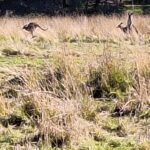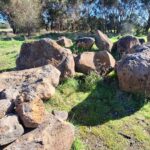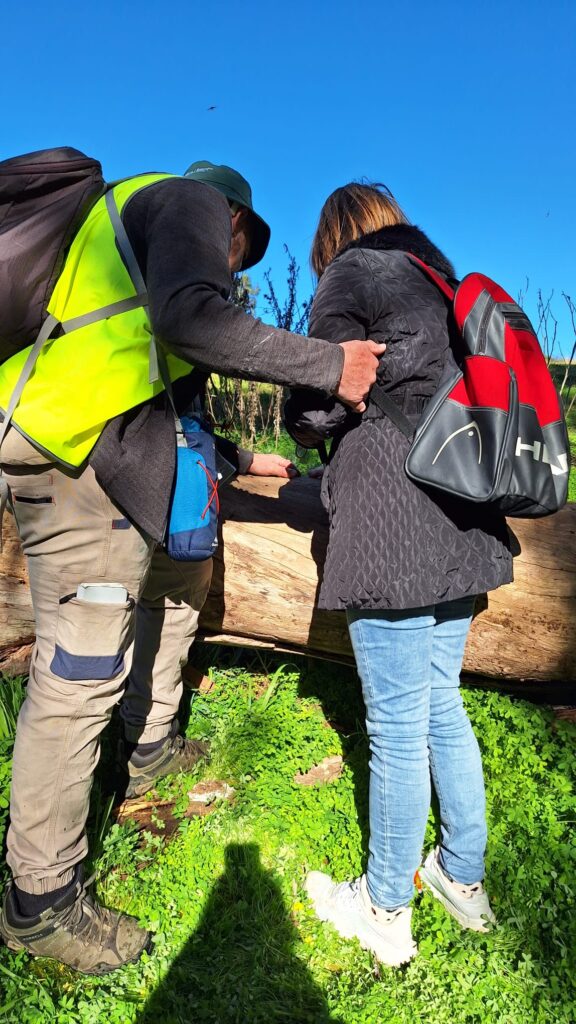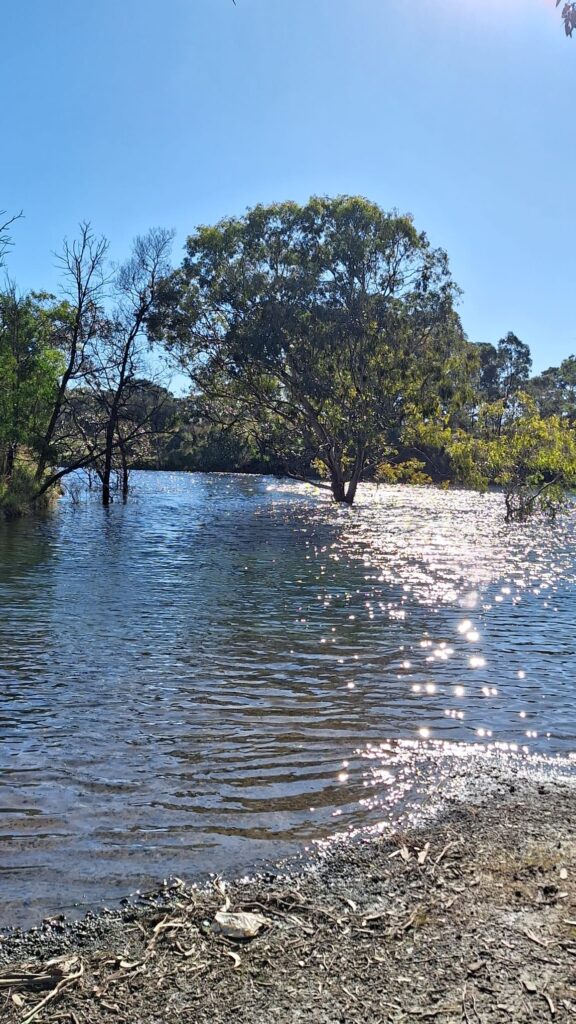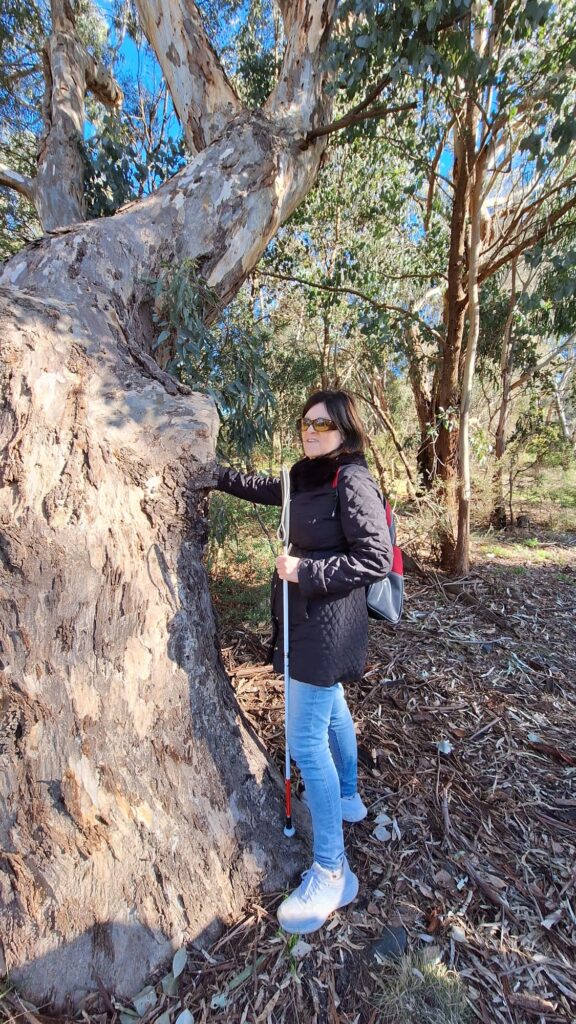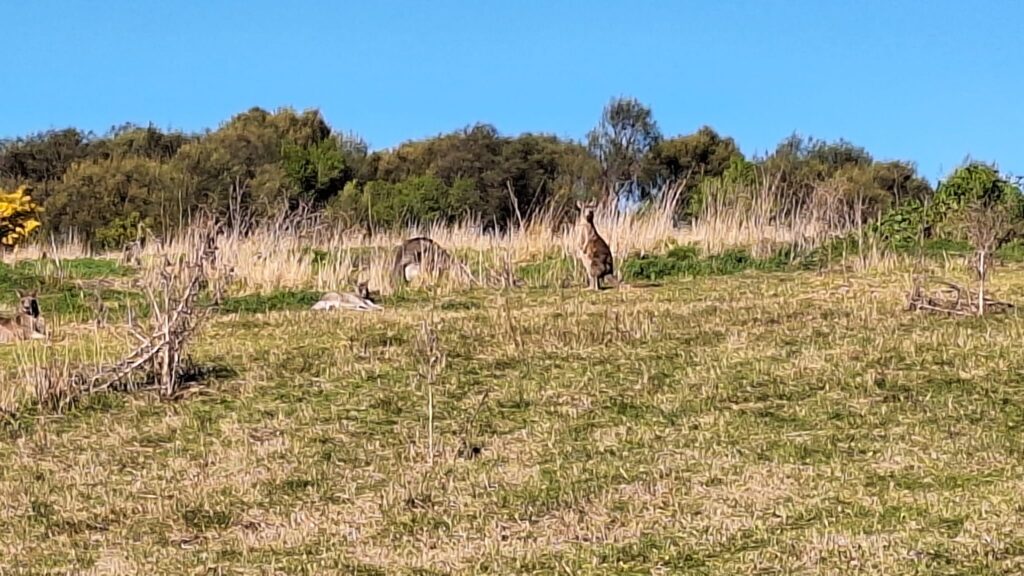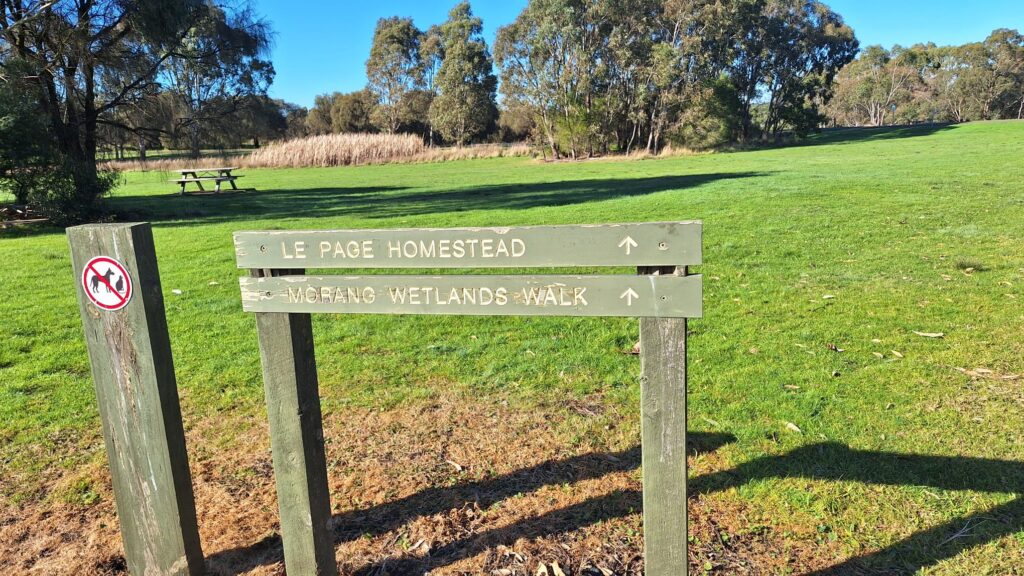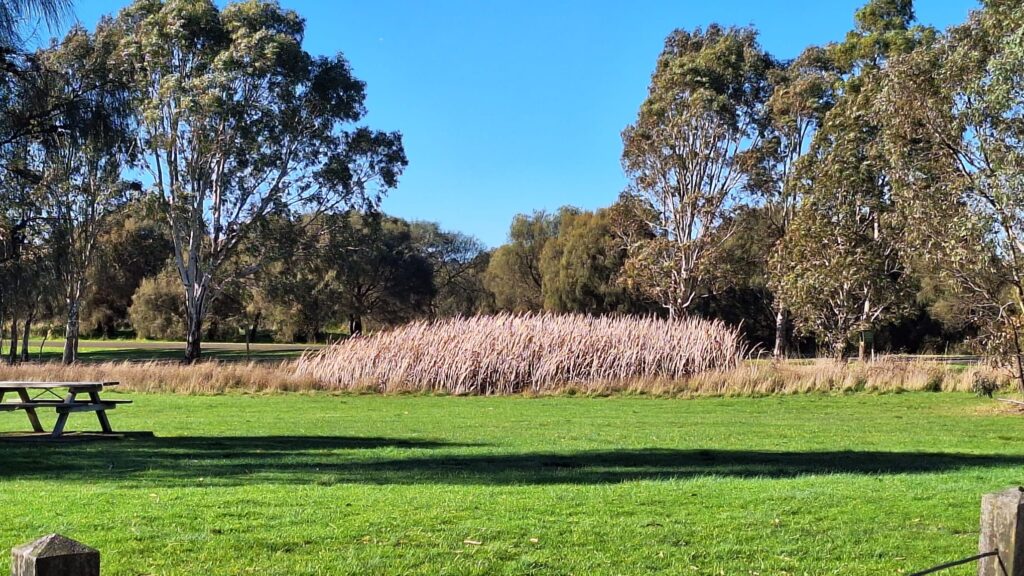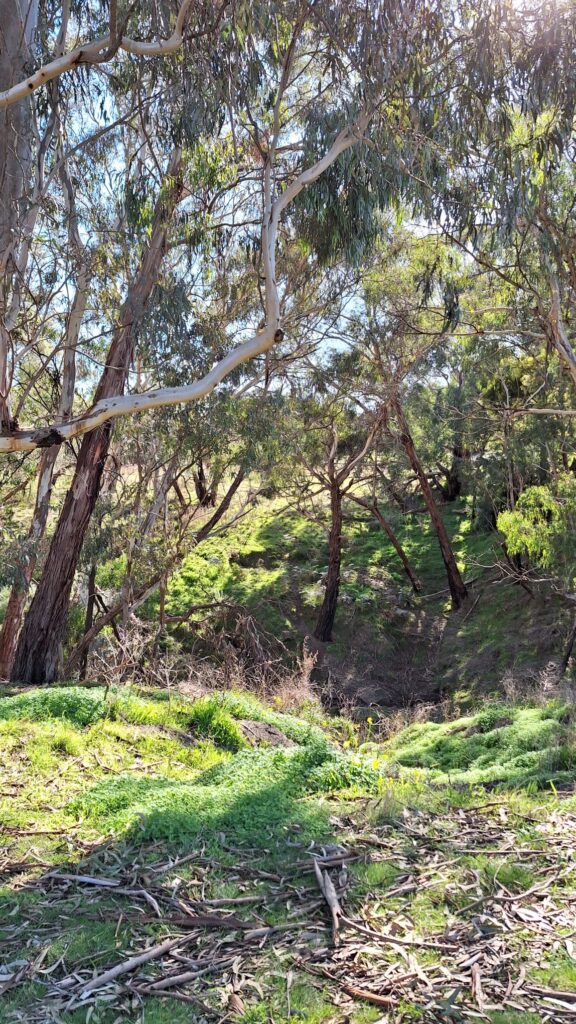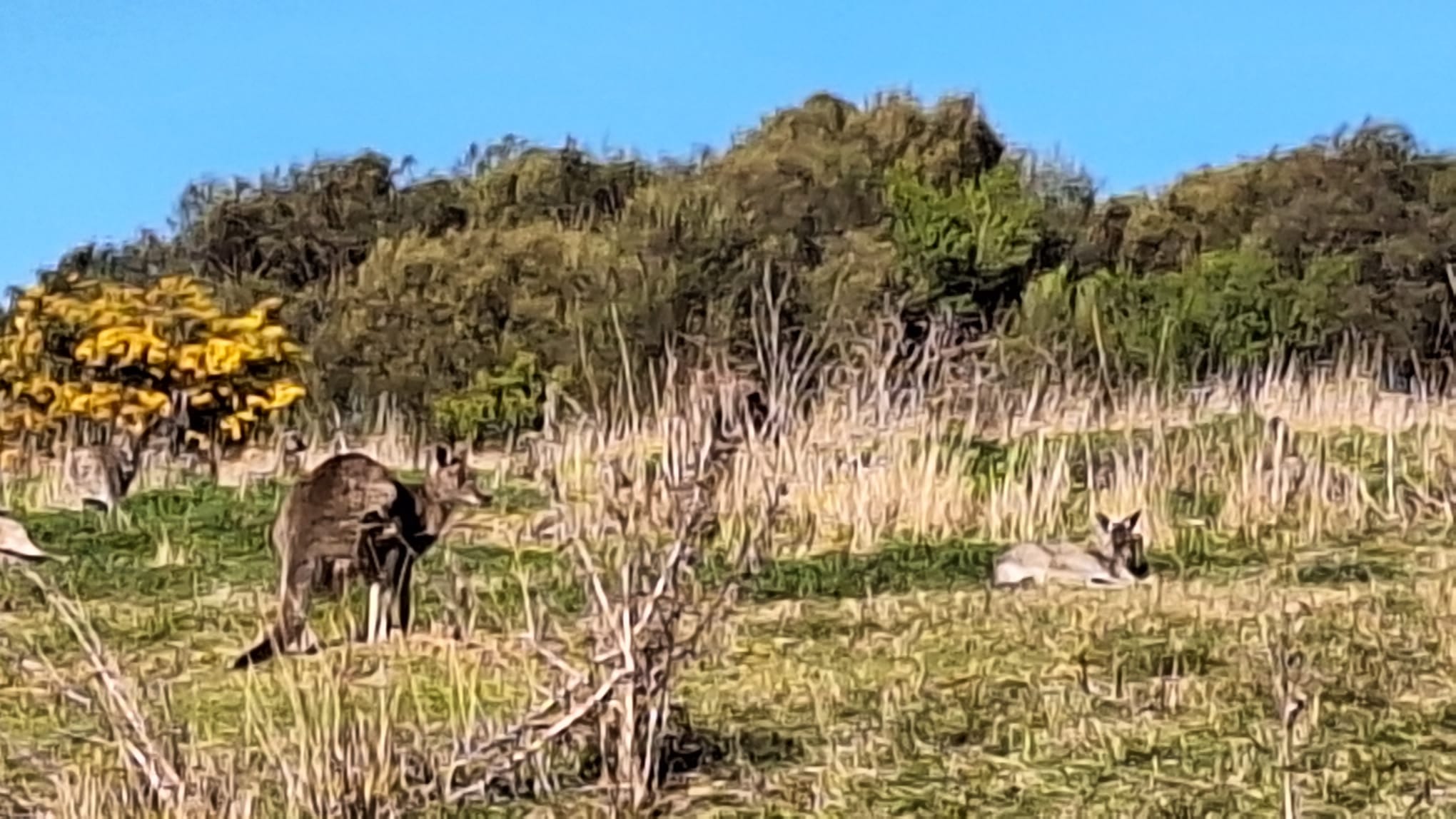You don’t have to go far out of Melbourne to experience the great outdoors and immerse yourself in nature. Once again, I was grateful to have the opportunity to do just that, thanks to Blind Sports and Recreation Victoria (BSRV) and Parks Victoria. This time, the walk took place at Morang Wetlands in the Plenty Gorge Parklands only about 20 kms from the Melbourne CBD. The park is on the Plenty River which runs for about 11 kms from Mernda to Bundoora.
All participants from BSRV, and their support workers met in the car park for a meet and greet with Parks Victoria volunteers. Miriam, program manager, mentor and overall wonderful person from BSRV joined us on the walk. There were more volunteers from Parks than on previous walks, but some were there to learn the ropes. Jim was our guide for the day, and as usual, he knew everything there was to know about the area.
The weather report
The day started with a mid-winter icy breeze. But it wasn’t long until the sun emerged, and the icy breeze dissipated leaving us with a chill factor 0. And that concludes the weather report for Monday 17 July.
The bird calls
We started the walk with a stroll along a wide sealed road with large expanses of grassy open spaces on either side. Before long, we stopped at a pond complete with bull rushes and frogs to listen for some bird calls. It was no surprise to know the Parks’ people knew their bird calls.
“That’s a Hoary-headed Grebe”.
“No, it’s not. It’s gotta be an Australian Grebe”.
I was hoping to hear one of these experts say they could hear a Pink-eared Duck or a Freckled Duck. Yes, I’d done some research on the area before the walk. Or even better, they could see a couple on the pond. But sadly, although the park is home to these two species of duck, they have not been spotted for years.
The destruction
Jim told us that the introduction of non-native plants and animals, such as rabbits and foxes, along with European settlement practices, that even included gold mining have dramatically changed the natural landscape of the area. Unfortunately, the destruction of natural habitats poses a significant threat to many animal species, leading to a decline in sightings for obvious reasons. Tragic is a word that comes to mind here.
The kangaroos
There were plenty of kangaroos on the grassy plains. They didn’t seem to mind a bunch of humans checking them out. It was obvious they were used to being a display item. Instead of running away, they were curious, and came closer standing there like statues waiting for a photo shoot. Unfortunately, not even the kangaroos are exempt from the devastating effects of non- native plants. Jim told us they are getting sick because of a grass called ‘phalaris’, yet another introduced species. This dangerous weed is grown to feed livestock.
The eagles
As we continued deeper into the wetlands, the track remained mostly flat with only a few gravelly areas and grassy terrain. The landscape was evolving into dense bushland with a variety of eucalypt trees along both sides of the track. Jim pointed out a few nesting boxes that were built by Parks volunteers and thoughtfully placed in trees to provide shelter and support for our bird friends. Some members of the group spotted a couple of eagles flying high above the trees.
After all this walking, it was time to stop for a couple sensory exhibits
Exhibit one
The Parklands exhibit two distinct landscapes. Jim explained how the western side is shaped by volcanic activity that occurred approximately two million years ago and diverted the course of the Plenty River. The eruption led to the formation of a flat basalt plain and deposits of lava rock. Jim was great and had a good understanding of the sensory needs of the visually impaired. He encouraged everyone to explore a rocky lava mound by touch. The texture was interesting enough; rough, porous, and gritty. But I wouldn’t say it was the most interesting thing I’d ever felt.
Exhibit two
Jim seemed knowledgeable about the difference between the eastern and western sides of the parklands, although he did say he wasn’t much good with compass points.
“Undulating hills and ridges, form the eastern landscape. This area is home for the Eastern Grey Kangaroos and echidnas that are on the lookout for termites and ants.”
The termites
That was the cue for Jim to lead us up a steepish grassy embankment to feel the termite tracks of a fallen tree that had been attacked by termites. The texture left by these tiny, tyrannical, tree destroying ants was slightly more interesting than the lava rock. Their cute squiggly, wiggly tunnels under the tree bark would eventually lead to the demise of the tree and reduce it to dust.
Compass points were never a strong point for me either. So let’s recap: Western side – basalt plains. Eastern side – rolling hills. Now which was it?
The red river gums
We continued our walk between the river red gums. These trees held significant cultural importance especially for the Wurundjeri Peoples, the Traditional Owners of the land. They created canoes, containers, shields, and temporary shelters from the bark of the trees.
The ‘Scar Trees’
And to top that, they cut toe holds into trees making them easier to climb. This technique enabled them to use the trees to look out for possums and access beehives for their honey. These trees known at “scar trees” hold historical significance, as they provide evidence of the areas once occupied by the Wurundjeri Peoples and the harmonious relationship they had within the natural surroundings.
What a wonderful informative day! Thanks again to BSRV, Parks Victoria and whoever was responsible for the weather.
“Plenty Gorge Parklands are part of an Aboriginal cultural landscape in the traditional Country of the Wurundjeri Peoples. Parks Victoria respects the deep and continuing connection that Wurundjeri Traditional Owners have to these lands and waters, and we recognise their ongoing role in caring for Country”. Parks Victoria
Thanks again to Joanna Lay, for taking such amazing photos.
